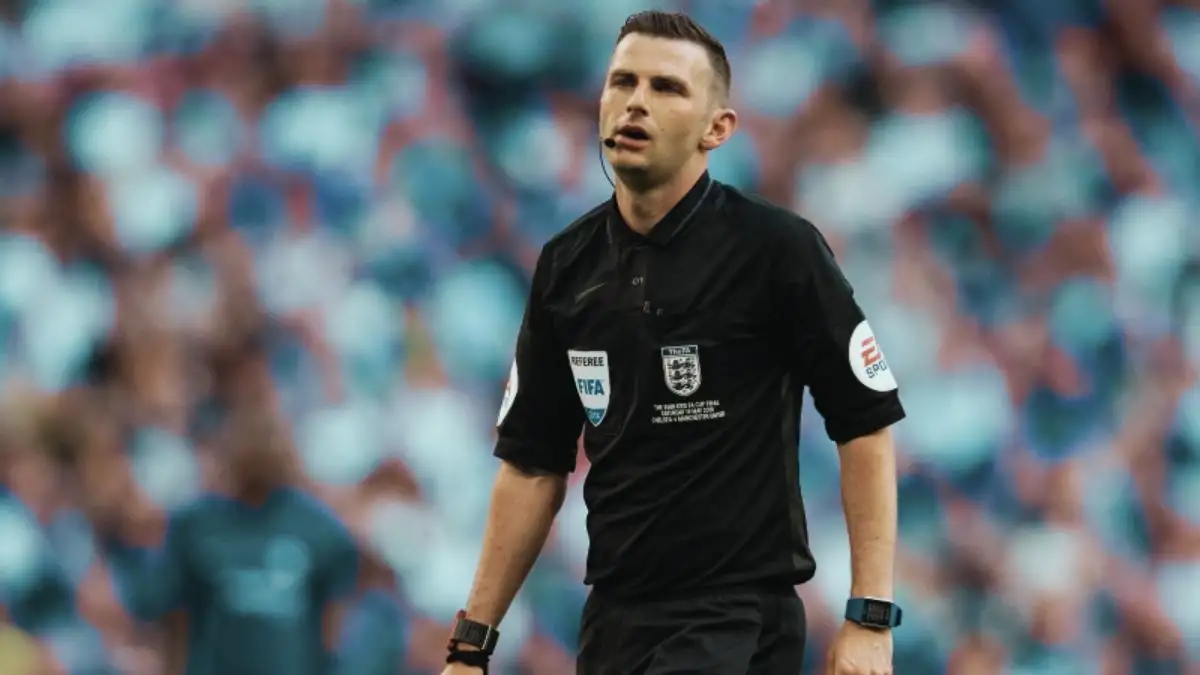Football Referee Letters Meaning, What do the Letters on Referees Mean?
Updated Jan 09, 2024

Football Referee
The referee is the person in charge of making sure the soccer game follows the rules. They decide when the game starts and stops, and they can give penalties to players or coaches if needed. The referee is the boss on the field and makes the final decisions about what happens during the game.
Sometimes, there are two assistant referees who help the main referee by telling them if the ball goes out of bounds or if someone breaks the rules where the main referee can't see. Even though the assistant referees help, the main referee has the most power and can change their decision if they need to. In big games, there might also be a fourth official who helps with other tasks on the sideline. All these referees and officials have to go through training to make sure they know the rules and can do their job well.
Football Referee Letters Meaning
In the intricate world of sports officiating, the role of each official is succinctly communicated through the letters adorning their uniforms. The official referee of the game is easily identifiable by the prominent letter "R" strategically placed on their attire, serving as an unmistakable marker for their crucial role as the ultimate decision-maker on the field. Meanwhile, the uniform adorned with the letter "U" designates an individual as an "umpire," responsible for overseeing specific aspects of the game with a unique set of duties.
Further distinguishing the various roles within the officiating crew are specific letters denoting positions such as "H" or "HL" for the "head linesman," "L" or "LJ" for the "line judge," and "S" or "SJ" for the "side judge." These coded uniforms provide spectators, players, and coaches with a visual key to understanding the intricate choreography of officiating teams, highlighting the specialized roles each member plays in maintaining fairness and order during the game
Catch the latest sports buzz here, where we bring you the most exciting updates and highlights, keeping you informed and thoroughly entertained at Fresherslive.
What do the Letters on Referees Mean?
In football, referees wear uniforms with letters and numbers to show their positions. Just like players, referees have specific jobs during the game. The referee wearing a white hat is the head referee and is really important. They're the main person in charge and will show when there's a penalty. Their role is crucial in making sure the game is fair and everyone follows the rules. The letters and numbers on their uniforms help everyone understand who is doing what on the field, making everything run smoothly.
Football Referee Positions
In football, referees have different jobs, just like players. Each referee is in charge of certain things that happen during the game. The main job of the referees is to keep the game safe. There are seven officials who make decisions about things like tackles, plays before the ball is snapped, and scoring plays.
Players on defense and offense must listen to and follow the referees' decisions because the referees have the last say in what happens on the field. Their role is crucial to making sure the game is fair and everyone plays by the rules.
Why do Football Referees Have Numbers?
Referees wear numbers on their jerseys to tell them apart from each other. This is especially important in professional football like the NFL and college games, where there are many referees. Having numbers helps when the league reviews the game to see how well each referee did.
In simpler games, referees might have letters on their jerseys instead of numbers. The numbers or letters help everyone know which referee is making the calls during the game. Referees play a crucial role in keeping order in football, a sport with lots of physical contact. Without referees, the game would be chaotic. It's important to respect and not criticize local referees, even if they make a mistake in a call.
Football Referee Letters Meaning- FAQs
The letter "R" stands for "referee," indicating that this official is the primary decision-maker on the field, responsible for overseeing the game and making crucial judgments.
The letter "U" designates the position of an "umpire." Umpires have specific responsibilities in the game, overseeing certain aspects and ensuring rules are followed.
These letters signify different positions within the officiating crew. "H" or "HL" refers to the "head linesman," "L" or "LJ" indicates the "line judge," and "S" or "SJ" represents the "side judge."
The letters help spectators, players, and coaches understand the specialized roles of each referee on the field. They provide a visual cue, enabling a better grasp of the officiating team's dynamics during the game.
These coded uniforms ensure clarity about who is responsible for what on the field, maintaining fairness and order during the game. They contribute to the coordinated efforts of referees in overseeing different aspects of play.







